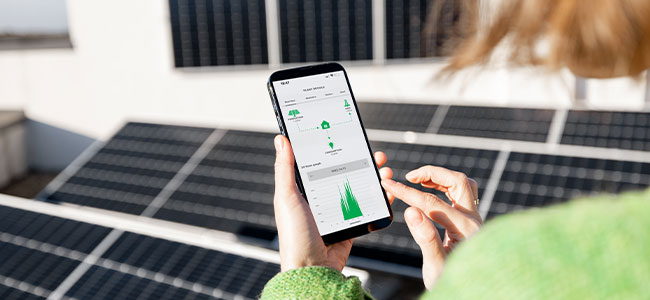
Real-Time Monitoring is the Key to Reaching Energy Reduction Targets in the U.S.
Real-time monitoring and SMART building technologies can significantly reduce energy consumption and help the U.S. meet its ambitious carbon reduction targets.
- By Serene Almomen
- Feb 22, 2024
A recent report found that climate-altering pollution from greenhouse gasses in the United States decreased by nearly 2 percent in 2023. Although this reduction is a positive step, it falls well below what’s needed to meet President Joe Biden's goal of cutting U.S. emissions in half by 2030.
Increased energy use in the building and construction sector has extreme consequences on the climate. Today, the construction and operation of buildings are responsible for 40 percent of all energy-related carbon dioxide (CO2) emissions, with the energy demand expected to grow another 50 percent by 2050. Building operators and developers need to drastically cut their energy use to meet the ambitious but necessary carbon reduction targets set by the Biden Administration for 2050.
According to the U.S. Department of Energy (DOE), sensors, actuators and controllers are the backbone of “SMART” building energy management systems. SMART systems are cyber-physical technologies that can be controlled from a centralized device, allowing for real-time monitoring and optimization of factors like indoor air quality and energy. Investing in these systems is key to achieving energy affordability and meeting reduction goals.
With climate change intensifying, building owners and operators must adopt real-time monitoring today. Utilizing SMART building technologies and automation to optimize heating, ventilation and air conditioning (HVAC) systems, lighting and other building functions reduces annual energy savings and minimizes buildings’ carbon footprint. In fact, the commercial real estate sector alone could save an estimated 29 percent of annual energy by implementing efficiency measures like monitors and controls. Those savings translate into environmental and financial benefits.
However, the building sector in the United States is diversified and fractured, making uniform application of energy-optimizing practices more challenging. According to the DOE, only 43 perent of the total floor space in the commercial building stock utilizes SMART systems. Of these, only 8 percent of small commercial buildings—those less than 50,000 square feet—utilize the technology, meaning that small and independent businesses are potentially losing out on energy cost savings. Moreover, carbon reduction techniques must be uniformly implemented in buildings nationwide to move the needle and meet global sustainability goals.
There are several federal grants available to building owners and operators to help them implement sustainable solutions such as energy optimization monitors. For instance, the Energy Efficiency and Conservation Block Grant (EECBG) Program is “designed to assist states, local governments and Tribes in implementing strategies to reduce energy use, to reduce fossil fuel emissions and to improve energy efficiency.” However, states continue underutilizing these programs, often due to cost concerns and lack of information.
One can’t drive a car without a dashboard; similarly, it’s imposible to efficiently operate a building without a SMART system. Real-time monitoring allows crucial insight into temperature, occupancy, indoor air quality, energy use and particulate matter concentration. Without real-time monitors, owners and operators are blind to the factors affecting the energy efficiency of their buildings. In other words, it’s only possible to manage what is measured.
To reach emission goals, owners, operators and tenants must be unified behind the growing need to optimize energy in buildings. As climate change continues to worsen, it’s imperative to adopt simple techniques that will increase the sustainability of buildings and the environment. Building operators and developers must implement SMART technologies, digitize and electrify infrastructure and utilize renewable energy sources where possible. Real-time monitoring is the first step, and it’s time American building owners conquer the adoption hurdle.
About the Author
Dr. Serene Almomen is the co-founder and CEO of the high-growth technology company Attune. Attune is a first-of-its-kind, sensor-based technology platform with 59 patents for its technology innovations. It provides real-time assurance into critical areas such as indoor air quality, energy consumption, risk of water leaks, critical equipment status, and more. Attune is the only customizable indoor air quality monitoring solution on the market and is UL 2905 and SOC2 certified, and GBAC Star Registered. For more information, visit attuneiot.com.